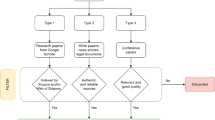Abstract
The Transportation Security Administration believes selective screening of aviation passengers may result in better security at airports in the United States. Under selective screening, passengers are prescreened using passenger information to determine the degree of risk that each passenger poses). This degree of risk is then used to determine the amount of security resources appropriate for that passenger. How to determine this degree of risk and the information that should be used are controversial topics, as evidenced by the large amounts of discussion concerning CAPPS and Secure Flight. This paper examines selective checked baggage screening systems that use a prescreening system and two types of baggage screening devices, one to screen checked baggage of passengers perceived as lower-risk and the other to screen checked baggage of passengers perceived as higher-risk. This paper reports a cost-benefit analysis of such selective checked baggage screening systems. The analysis is performed for several scenarios that consider various levels of accuracy of prescreening systems in assessing passenger risk. The results indicate that the accuracy of the prescreening system in assessing passenger risk is more important for reducing the number of successful attacks than the effectiveness of the checked baggage screening devices at detecting threats when few passengers are classified as higher-risk. Moreover, several selective screening scenarios are identified that may be preferable to current checked baggage screening strategies.


Similar content being viewed by others
References
Barnett A (2001) The worst day ever. OR/MS Today 28(6):28–31
Barnett A (2004) CAPPS II: the foundation of aviation security? Risk Anal 24(4):909–916
Butler V, Poole RW Jr (2002) Rethinking checked-baggage screening. Technical report, Reason Public Policy Institute, Public Policy No. 297. Los Angeles, CA
Cartensen P (2004) The lamppost, the wizard and the law: reflections on professor Barnett’s assessment of CAPPS II. Risk Anal 24(4):917–919
Caulkins JP (2004) CAPPS II: a risky choice concerning an untested risk detection technology. Risk Anal 24(4):921–924
Chakrabarti S, Strauss A (2002) Carnival booth: an algorithm for defeating the computer-assisted passenger screening system. First Monday 7(10) (available at www.firstmonday.org)
Jacobson SH, Bowman JM, Kobza JE (2001) Modeling and analyzing the performance of aviation security systems using baggage value performance measures. IMA J Manag Math 12(1):3–22
Jacobson SH, Karnani T, Kobza JE (2005) Assessing the impact of deterrence on aviation checked baggage screening strategies. Int J Risk Assess Manage 5(1):1–15
Jacobson SH, Virta JE, Bowman JM, Kobza JE, Nestor JJ (2003) Modeling aviation baggage screening security systems: a case study. IIE Trans 35(3):259–269
Martonosi S, Barnett A (2003) Security profiling of airline passengers: how effective would it be? INFORMS National Meeting, Atlanta, GA, 19–22 October 2003
McLay LA, Jacobson SH, Kobza JE (2006) A multilevel passenger prescreening problem for aviation security. Nav Res Logist 53(3):183–197
Mead KM (2002a) Deployment and use of security technologies. Office of Inspector General, Department of Transportation, Report Number CC-2002-007. Washington, DC
Mead KM (2002b) Key challenges facing the transportation security administration. Office of Inspector General, Department of Transportation, Report Number CC-2002-180. Washington, DC
Mead KM (2003) Statement before the national commission on terrorist attacks upon the United States on aviation security. Office of Inspector General, Department of Transportation, Report Number CC-2003-117. Washington, DC
Miller L (2003) Delta to test new airport security plan. Associated Press, available at http://archives.californiaaviation.org/airport/msg25287.html
Perazzo J (2003) The ACLU’s war against national security. FrontPageMagazine.com, (available at www.frontpagemagazine.com)
Poole RW Jr, Passantino G (2003) A risk-based airport security policy. Technical report, Reason Public Policy Institute, Public Policy No. 308. Los Angeles, CA
Ravid I (2004) Safety versus defense: comments on “CAPPS II: the foundation of aviation security?”. Risk Anal 24(4):929–931
Sperry P (2002) Suing Saudi for 9–11? WorldNetDaily.com (available at www.worldnetdaily.com)
Stefani AM (2000) Aviation security federal aviation administration. Office of Inspector General, Department of Transportation, Report Number AV-2000-070. Washington, DC
United States Department of Homeland Security (2004) Fact sheet: CAPPS II at a glance. Press release, United States Department of Homeland Security. Washington, DC
United States Transportation Security Administration (2003a) CAPPS II fact sheet. Press release, United States Department of Homeland Security. Washington, DC
United States Transportation Security Administration (2003b) TSA’s CAPPS II gives equal weight to privacy, security. Press release, United States Department of Homeland Security. Washington, DC
United States Transportation Security Administration (2004) “Secure Flight” to be tested before year’s end. Press release, United States Department of Homeland Security. Washington, DC
Virta JE, Jacobson SH, Kobza JE (2002) Outgoing selectee rates at hub airports. Reliab Eng Syst Saf 76(2):155–165
Virta v, Jacobson SH, Kobza JE (2003) Analyzing the cost of screening selectee and non-selectee baggage. Risk Anal 23(5):897–908
White House Commission on Aviation Safety and Security (1997) Gore commission final report. Report (available at http://www.airportnet.org/depts/regulatory/gorecom.htm).
Acknowledgements
This research has been supported in part by the National Science Foundation (DMI-0114499, DMI-0114046, and CBET-0735735) and the Air Force Office of Scientific Research (FA9550-07-1-0232). The authors would also like to thank Dr. John J. Nestor and Dr. Lyle Malotky of the Transportation Security Administration within the United States Department of Homeland Security for their comments and feedback on earlier drafts of this manuscript.
Author information
Authors and Affiliations
Corresponding author
Rights and permissions
About this article
Cite this article
McLay, L.A., Jacobson, S.H. & Kobza, J.E. The tradeoff between technology and prescreening intelligence in checked baggage screening for aviation security. J Transp Secur 1, 107–126 (2008). https://doi.org/10.1007/s12198-007-0010-8
Received:
Accepted:
Published:
Issue Date:
DOI: https://doi.org/10.1007/s12198-007-0010-8




